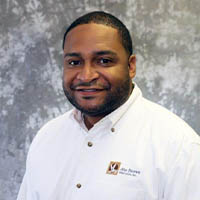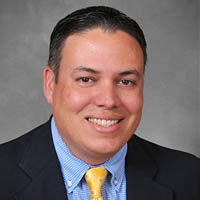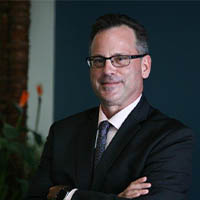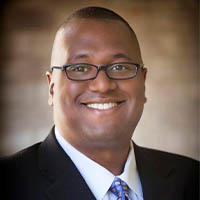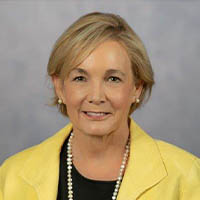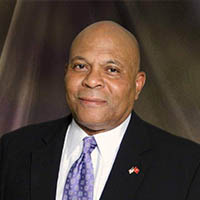Workforce Development Advisory Team's Foundational Work
On July 29, 2019, Mayor Jane Castor kicked off this Advisory Team and challenged it to develop a targeted plan for creating a skilled pipeline of talent to support and sustain Tampa’s ongoing economic development activities. The initial focus was on addressing the tremendous labor shortage in the building and construction trades sector where there is an estimated 4,100 job openings. It was agreed that the contours used in guiding the initial focus also could function as a map for addressing other high growth areas including Healthcare, Culinary/Hospitality, Business/Financial Services, and Information Technology.
The team was comprised of leaders from Tampa’s workforce ecosystem including the K-20 education system, labor organizations, major employers, non-profits, and economic development agencies. During the initial meetings, the group agreed to utilize an evidence-based approach to their work by focusing on the following: 1) assembling and analyzing information regarding the current state of Workforce Development initiatives across the City of Tampa and the entire Tampa Bay community, 2) developing a common understanding of the city’s existing labor market from both a supply (talent) and demand (employer) perspective, 3) examining best practices from other communities, and 4) synthesizing the acquired information into organizing concepts that could serve as anchors in developing a set of recommendations.
Workforce Development Advisory Team Recommendations
The key concepts that emerged were:
Connections: - Developing and Maintaining a Collaborative Approach
Guidance: Establishing a ‘Pathways to Professions’ Approach
Awareness: - Heightening Awareness of Programs and Resources
The group leveraged their respective talents and expertise, but also sought the input of a wide range of stakeholders representing numerous workforce-related organizations across Tampa and the region. They also welcomed input from the public at each meeting. They researched and evaluated initiatives and programs from across the country that has demonstrated success in overcoming challenges similar to Tampa's, including an extensive review of the work done in Denver and Charlotte. These inputs, coupled with local benchmark data, helped to inform the findings and recommendations of this team.
In addition, the team acknowledged that operating in a collaborative manner would better maximize their respective efforts to impact disadvantaged neighborhoods, support workforce-limited employment sectors, and build a stronger community. To this end, the team emphasized the need to ensure the long-term sustainability of the initiatives by leveraging the core competencies of existing workforce leadership in partnership with the academic, non-profit, and public and private sectors.
Factors Influencing the Workforce in Tampa
In 2018, the Tampa Bay Partnership, the Community Foundation of Tampa Bay, and the United Way Suncoast produced a benchmark report that found Tampa Bay trailed other comparable metro areas in education levels of employees, and had a high percentage of people aged 16 to 24 who were not participating in the workforce.
The Mayor’s Workforce Advisory Team honed in on this finding and began to shape its approach around how to positively impact this alarming statistic. The Workforce Advisory Team would like to acknowledge and thank the team at the Tampa Bay Partnership for their critically important work in our community.
Tampa's Labor Market
From 2014 to 2019, jobs in Hillsborough County increased by 11.9% from 681,053 to 762,364 outpacing the national growth rate of 7.3% (Economic Modeling Specialists, International (EMSI), 2020). Most of these jobs were in the high-growth areas of healthcare, financial and professional services, tourism and hospitality, retail trade, manufacturing, and construction. Additionally, the rapid growth in job openings was exacerbated by high attrition rates for workers in some occupations resulting in a projected 850,000 openings across the region (Tampa Bay Partnership Regional Competitiveness Report, 2018).

Tampa’s Talent Pipeline
Tampa Bay’s labor market consists of approximately 1.5 million individuals making it one of the 20 largest labor markets in the United States. (Tampa Bay Partnership Regional Competitiveness Report, 2018). While the region’s labor force is substantial in scope, persistent challenges, including large numbers of disconnected youth, a misalignment between skill sets and job requirements, and underemployed workers, are disrupting the quality of the talent pipeline.
Educational attainment rates provide a key indicator of the quality and stability of a region’s talent pipeline. Per EMSI, 40.2% of Tampa residents possess a high school diploma or less and, with 60% of in-demand jobs requiring some type of post-secondary credential, this translates into a substantial segment of Tampa’s labor force being either unemployed or unprepared for post-secondary educational opportunities. The problem is particularly chronic among disconnected youth ages 16-24 where an estimated 12.23% of individuals are persistently unemployed or unable to access career training programs (Regional Competitiveness Report, Tampa Bay Partnership, 2020). Of those who do graduate from high school, 26.9% possess a post-secondary certificate and another 30 percent eventually complete an associate’s or bachelor’s degree (Regional Competitiveness Report, Tampa Bay Partnership, 2018, 2020).
The following chart reflects a comparison of the number of job openings in the local high-growth sectors being targeted by the Mayor’s Workforce Initiative to the number of jobs requiring post-secondary credentials.
| Sector |
Total Job Postings (2019) |
# of New Job Postings (2019) |
# of New Job Postings Requiring a 2-year degree (2019) |
|
Construction
|
40,426
|
24,965
|
7,117
|
|
Manufacturing
|
87,433
|
21,275
|
11,092
|
|
Financial, Real Estate, and Professional Services
|
546,953
|
91,188
|
57,481
|
|
Tourism & Hospitality
|
238,742
|
53,015
|
10,609
|
|
Health Care
|
161,200
|
30,934
|
14,548
|
Economic Modeling Specialists, Inc.
The number of total job openings reflects both new positions as well as positions that were vacated as a result of resignations, retirements, terminations, and the like. The number of new job postings refers to unique positions that were being advertised for the first time. It is important to note that, while not all positions require post-secondary training, especially in construction and culinary, and hospitality, these sectors often give preference to those applicants who hold post-secondary certifications but not necessarily a two-year degree.

Tampa’s Skills Gap
Tampa’s education system is comprehensive encompassing the School District of Hillsborough County (SDHC), Hillsborough Community College (HCC), the University of South Florida (USF), and the University of Tampa (UT). Despite the educational resources available to residents, Tampa’s labor market remains challenged by the following factors: 1) a persistent “skills gap” in high growth sectors whereby those seeking employment do not possess the skills required by local employers, and 2) a fragmented workforce system in which educational entities, local workforce boards, community resources, and employers often function in an ad hoc as opposed to systematic manner.
It is estimated that there will be 165 million jobs in the economy by 2020 and 65 percent of those jobs will require some type of postsecondary credential. Tampa’s labor market reflects this same reality as local occupations that offer high-wage and high-demand employment opportunities for residents require a mixture of post-secondary credentials and employability skills training (i.e., communication, problem-solving, reliability).
There are various initiatives underway in Tampa that seek to address this challenge with LEAP Tampa Bay being at the forefront with a stated goal of “increasing the number of working-age adults in Tampa Bay who have a post-secondary degree or high-quality certificate to 60 percent by 2025.” However, of particular significance to Tampa’s labor market is the fact that only 30 percent of high school students choose to pursue post-secondary credentials. The remaining 70 percent of Tampa youth are either unemployed or employed in low-wage jobs with little opportunity for advancement. With direct implications for Tampa’s future, this youth population is also stymied by a lack of understanding regarding viable career pathways in high growth occupational areas, the specific training, and credentials required to qualify for these occupations, and the availability and location of community resources that could remove barriers to their training (e.g., childcare, transportation, financial resources).
Tampa’s Fragmented Workforce System
Generally speaking, a local workforce system includes the organizations, and their associated activities, that prepare people for initial employment and career advancement through upskilling. The culminating and desired outcome is the creation of a stable talent pipeline that can support local industry and overall economic expansion. While Tampa has all of the required components of a comprehensive workforce system, including a local workforce board, major employers, educational partners, community-based organizations, and economic development agencies, the system does not consistently function in a cohesive manner. This has led to duplication of services, silos of initiatives, and minimal high-impact practices. More importantly, residents have been left to navigate a complex array of information and training options rather than accessing a step-by-step model leading them from career planning, to training and credentialing, and finally to progressive employment opportunities.
General Findings and Recommendations
The Advisory Team identified numerous tactical and strategic recommendations that are set forth more fully in this report. The Team also identified several foundational recommendations that are set forth below. These recommendations were identified as critical to achieving the overall vision for this Mayoral priority.
- Emphasize Collaboration. The Advisory Team emphasized the importance of a collaborative approach across all stakeholders and acknowledged the considerable efforts already in process. For example, the group was briefed on the effective work being done by local organizations such as CareerSource Tampa Bay which is demonstrating effective and defined work to capitalize and rely upon the strength of community partners.
- Complement, Don’t Duplicate. The Advisory Team felt it was imperative that their recommendations complement existing work, identify potential gaps, and do everything possible to not duplicate the missions or approaches of existing organizations, but rather support and strengthen those programs through collaborative approaches.
- Focus on Talent. Throughout the Advisory Team meetings, the group focused on the talent - or supply side - of the workforce and how to engage efforts to close the workforce gap. Of particular importance was a focus on the Mayor’s recommendation to identify initiatives that could effectively bridge talent to the growing construction trades through training and hiring programs. This would optimize the current state of growth in Tampa and establish a template that could be applicable to other industries.
- The Advisory Team appreciated the commitment of Mayor Castor to this critical issue and recognized that her leadership would be pivotal to advancing the initiatives, setting expectations for stakeholders, and achieving the ultimate objectives.

Section 1
Connections: Develop and Maintain a Collaborative Approach
Creating connections among members of the community is a key component in providing effective, efficient, and quality workforce development solutions. Only through an interconnected community can we build a strong talent pipeline that aligns talent needs and educational opportunities with those seeking employment opportunities in the community. Following are key recommendations to support this approach.
- Establish a Mayor’s Workforce Council
Members of the Advisory Team represented a broad range of organizations, experiences, and perspectives which quickly cultivated a highly collaborative environment. The team thrived off of the input of their colleagues and counterparts doing similar work in related fields and endeavors. They also recognized that many of their efforts were often duplicated, and in some cases, initiatives were not fully optimized because of limited resources or narrow scope.
The team members agreed that they were more productive and effective when functioning as a group and sharing ideas, tools, information, and resources. For that reason, the Advisory Team recommended that its function be formally established and maintained in the form of a Mayor’s Workforce Council. The group would be comprised of representatives from industry (demand), education and training (supply), community leaders, community-based organizations, and students and recent graduates from all academic levels.
Key activities of the Council would include:
- Help to manage the ‘talent pipeline’ by optimizing numerous initiatives and eliminating duplicative activities.
- Identify the largest employers in the City and/or region and establish programs for each to achieve a target hire objective to contribute to incremental progress in the City’s workforce efforts.
- Identify and support initiatives that focus on ‘wrap around’ programs to address barriers to maintaining employment such as childcare, transportation, language translation, citizenship status, and the like.
- Identify opportunities to pool resources and funds or seek grants and other funding sources as a collective group.
- Work together to promote and advertise all activities and support services on behalf of all community partners.

- Engage all community stakeholders
Seek input and active participation from all members of the community including the business, academic, and not-for-profit sectors. A community must invest in its workforce to ensure the ability to continue to attract and retain employers which will invest in training and retaining a talented workforce. It’s a virtuous cycle that enables a healthy economy.
The City’s wide range of business support organizations should be expected to be active in driving solutions, including the various Chambers of Commerce, partnerships, and economic development organizations. Likewise, its academic institutions and not-for-profits must also do their part to be engaged in addressing the needs and contributing to the solutions.
- Establish key metrics to drive performance
- Unify and align access to resources
There are numerous support services available to job seekers and employers across the City and beyond. Those sources are not effectively linked or aligned and can sometimes be a complicated web of information. The Advisory team recommends collaborating across the diverse service providers to clarify and unify information and tools. This could be done by linking existing websites, establishing a clearinghouse approach to the most critical information, and using the Mayor’s Workforce Advisory Council to better share and engage best practices and programs.
Additional recommendations include:
- Develop and share a Comprehensive Resource Portal that would showcase job opportunities and enable better integration of access to all jobs.
- Evaluate existing tools and resources to determine which are most effective and reinforce the use of these practices across all service providers.
- Determine which programs result in the most successful placements and combine or optimize those efforts to achieve maximum benefit and outcome.
Section 2
Guidance: Establish a ‘Pathways to Professions’ Approach
To combat the complexities of fragmented workforce systems, some cities have adopted a combination of career pathways and sector-based approaches to create an operational framework that unites the efforts of workforce organizations. Career pathways bring together education and training providers with local employers for the purpose of collectively developing a pathway that clearly identifies the training requirements, high-value industry certifications, and various employment options within a chosen career field.
Meanwhile, sector-based strategies focus on the talent needs of a particular industry by primarily focusing on the employment of low- and middle-income workers who, once trained for occupations within a particular sector, can benefit from the transferability of their skill set to other, more advanced, opportunities within that same sector.
Collectively, these two approaches address the full spectrum of the local labor market by encompassing the unemployed, the underemployed, and those seeking a career change. More importantly, the unified system resulting from the career pathways and sector-based strategies provides job seekers with clear and focused access to resources that support both their successful entry and advancement within the local labor market. This ensures greater economic mobility for residents and their families while also ensuring that Tampa’s employers have reliable access to a highly-skilled talent pipeline.
Within this context, the Advisory Team developed the following key recommendations:
- Adopt a ‘Career Pathways’ Model
A career pathways model will best inform residents of career opportunities, training options, and community resources in Tampa’s high-growth employment sectors.
- Develop a comprehensive workforce resource guide
Synthesize and leverage existing guidance materials from across the workforce system for the purpose of developing a single source that can guide an individual through the process of selecting a career pathway, entering a required training program, and accessing wraparound support services, if needed, via community resources. Some key aspects of this guide may include.
- The guide should be reproduced as both a printed document and as an electronic resource.
- The guide should utilize an action-driven format (e.g., where am I now, where do I aspire to go, how do I get there; how do I navigate to the end goal).
- Initially, focus the guide on the Building and Construction Trades sector with an eye toward using this as a template for additional sectors in the future.
- Input from employers, education entities, the local workforce board, and community organizations should be leveraged in constructing the guide. This will ensure input from all key stakeholders while also providing an opportunity for aligning training programs and potentially eliminating duplicate training services in those instances where there are no capacity issues.
- Rely upon national career pathways models to provide end-users with estimated wage information, job availability data, and defined paths for career advancement
- Target the youth population, particularly ages 16-24, for distribution of the guide by leveraging existing career events in the Building and Construction Trades sector to include Build Tampa Bay, SDHC’s Career Night, HCC’s Apprenticeship Job Fair, and CareerSource’s Youth Summer Program. Social media platforms should also be used to penetrate this target market.
- Use community and neighborhood centers in economically disadvantaged communities as forums for Mayor Castor to promote the availability of guides and opportunities in the Building and Construction Trades sector.
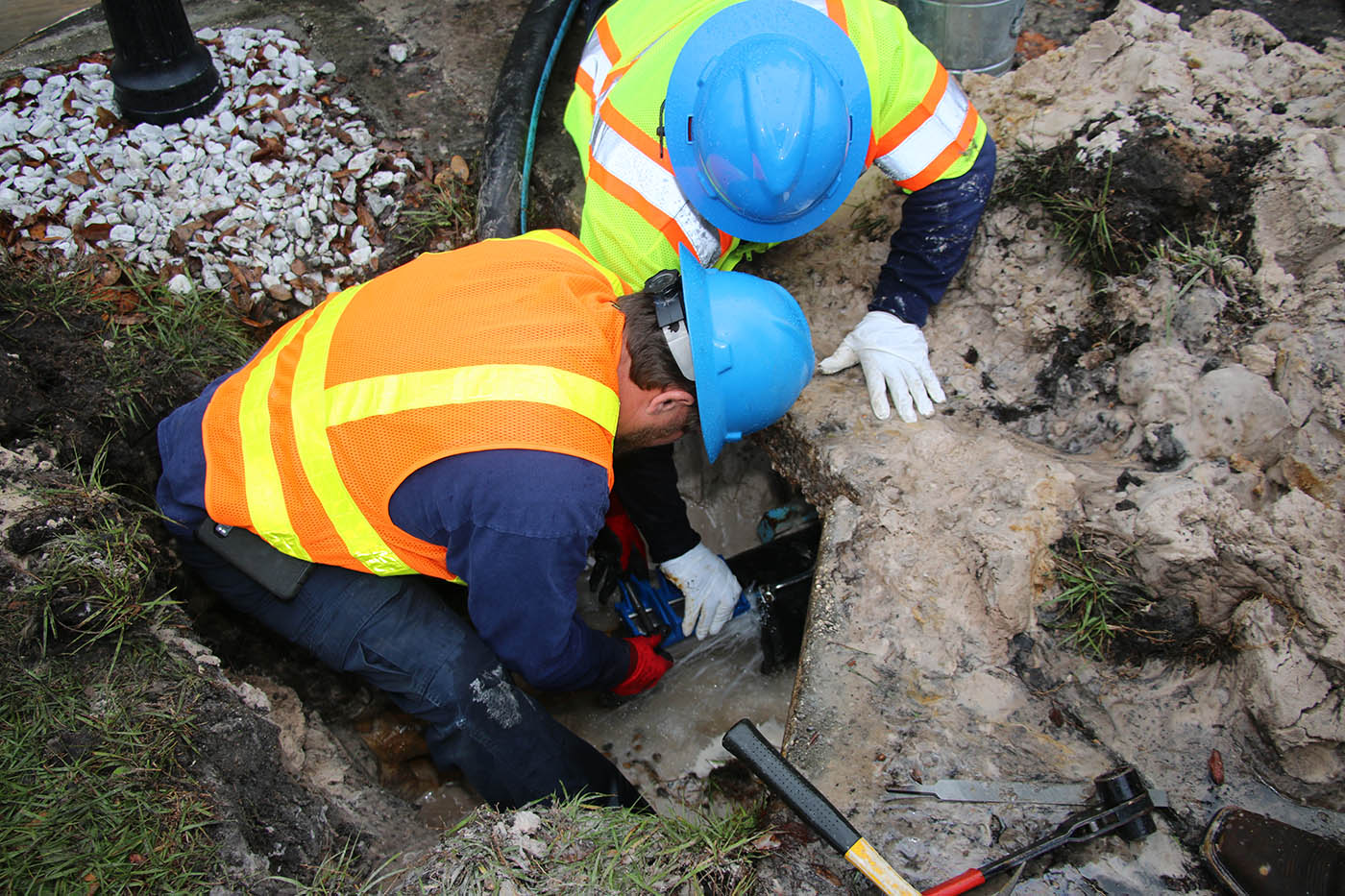
- Develop a comprehensive ‘Asset Map’
Compile a single source of information about the inventory of workforce initiatives and opportunities, e.g. TAMPA CONNECT or EmployTampa.com, which will enable greater access and ability to participate in programs.
- Develop a Digital Information Hub
The career pathways model will require a portal or digital hub in which all the relevant data in terms of job openings, training providers, and educational opportunities will need to reside. This information must be in an easy-to-understand format for residents and businesses to access, add to, and modify information.
Recommended aspects of this hub may include:
- A digital ‘matchmaking’ tool for collecting key knowledge, skills, and abilities (KSA’s) within Tampa’s high growth sectors and matching employers and potential employees using the KSA’s as the primary criteria.
- A guided pathway function that presents ‘on ramps’ at various stages of a person’s life, career, and education path and options that result in various outcomes.
- A clearinghouse of information, not an endpoint.
- Measure and Correct
Routinely measure the effectiveness of the model and progress toward targets. A correct course where appropriate to ensure alignment between employer needs, potential employee skills, and local training programs.
- Leverage Existing Opportunities
Identify and prioritize current or planned workforce programs, training and hiring opportunities, and relationships with organizations that have demonstrated success in the career pathways model. Some examples include:
- Government infrastructure and public works projects including Florida’s Department of Transportation apprenticeship program.
- Local workforce programs such as the Building Trades’ Multi-Craft Core Curriculum (MC3) and Build Your Future’s (BYF) ’Build Tampa Bay Career Day.'
- Programs are administered nationally by the National Center for Construction Education, North America’s Building Trades Unions (NABTU), and the National Joint Apprenticeship and Training Committee (formerly the Electrical Training Alliance).
- Other state, local, and national organizations and programs focused on advancing the construction trades workforces such as the Associated Builders and Contractors (ABC).
- Integrate workforce development into the academic curriculum
The Advisory Team reviewed a number of programs and information relating to the need to better integrate workforce development into the basic academic curriculum. Several specific recommendations include working with Hillsborough County and other educators to:
- Establish a program that integrates ‘career and technical education (CTE) with one of the local building trades programs. Focus on youth pre-high school to expose them to career paths via trades apprenticeships.
- As early as possible - 7th, 8th, or 9th grade - expose students to the U.S. Department of Labor's Registered Apprenticeship program to make them aware of what an apprenticeship is and how it can help shape their future. The NABTU currently offers an outreach program of this nature.
- Incorporate MC3 as part of an overall curriculum choice for 9th and 10th graders.
- Have defined CTE pathways for 11th and 12th graders in which students can choose to prepare themselves further for careers in construction.
Section 3
Awareness: Improve Outreach Regarding Programs and Resources
The Advisory Team explored many options as to how to best communicate with job seekers to ensure that they are aware of available programs, tools, and resources. Whether they are high school seniors, middle schoolers, under-employed 20-somethings, or veterans, they fall into Generation Y or Generation Z and have similar characteristics.
The challenge is to find the most effective means to generate interest and encourage connection to training programs and resources to better serve their future.
Following are key recommendations regarding outreach and engagement:
- Focus on disconnected youth; those who do not pursue a college education.
- Direct outreach also to parents, teachers, counselors, and the general public - not just the job seekers.
- All communications should be visual and user-friendly.
- Rely upon delivery methods that are already popular.
- Develop a ‘Workforce Connection Day’ modeled after the City’s ‘Bridges to Business’ program to consolidate and personalize outreach and better engage job seekers in their neighborhoods.
- Incorporate aspects of the outreach approach used by Denver, Detroit, Charlotte, and St. Petersburg.
- Introduce a ‘Jobs of the Week’ feature for the Mayor and City to promote
- Partner with Career Source Tampa Bay to use one or more of their podcast series to feature the Mayor or other local celebrities to generate enthusiasm for workforce development programs or events.
- Promote organizations that are fulfilling hiring expectations, e.g. Employer Showcase.

COVID-19 Addendum
Mayor Castor’s Workforce Development Advisory Team completed its report in the weeks leading up to the first recorded domestic outbreak of coronavirus. At the time, unemployment was at a consistent low and there was a shortage of trained workers for skilled jobs.
Today, tens of thousands of Tampa workers have lost their jobs as a result of COVID-19. The virus has had a devastating impact on sectors including hospitality, retail, and the arts. As we enter a period of recovery, many businesses face adaptation challenges and will not fully re-staff for one or two years. It is unclear what the long-term impacts and ramifications of COVID-19 will be.
The dramatic impact of COVID-19 on certain sectors of our economy has not only increased the need for workforce development initiatives at an unprecedented scale, but it has changed both the level of urgency and the types of programming needed as part of Tampa’s economic recovery.
Tampa’s economic recovery depends on putting people back to work as soon as possible so that families have the certainty of a paycheck. Moving forward, Tampa is working with Hillsborough County to ensure that CARES Act funding is invested in programs that make this happen. The City of Tampa has also taken immediate recovery and relief measures through its One Tampa and Lift Up Local programs which have helped to save jobs and re-employ hundreds of Tampanians.
Many Tampa residents may experience difficulty in immediately securing employment in the sector of their choice. We believe that training programs for repurposed workers should be paid opportunities and that resources should be provided to workers who are transitioning back into employment.
While the workforce development initiatives in this report are meant to be long-term solutions, we recognize that COVID-19 is going to require immediate measures to stabilize our local workforce that will take precedence. Like our businesses, nonprofits, and residents, the City of Tampa will adapt to the challenges resulting from this pandemic.
In spite of this, our ultimate mission has not changed. What we are working toward is building lifelong opportunities for all of our residents, in all of our neighborhoods, to develop valuable skills that lead to higher earnings and shared prosperity.



